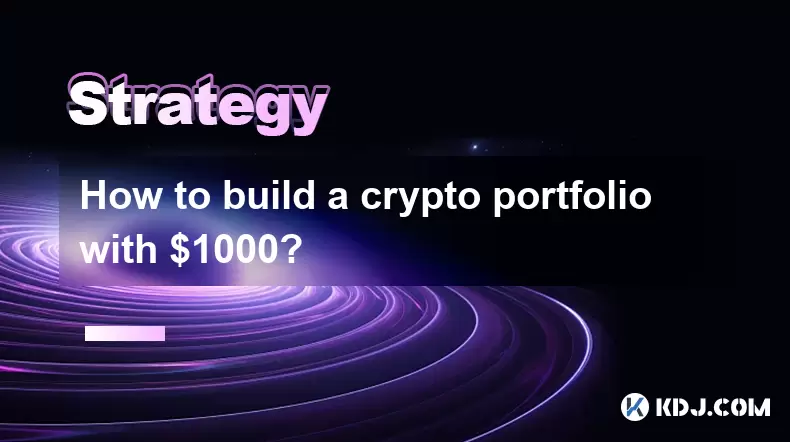-
 Bitcoin
Bitcoin $112400
-1.07% -
 Ethereum
Ethereum $3409
-3.27% -
 XRP
XRP $2.784
-6.60% -
 Tether USDt
Tether USDt $0.9997
-0.03% -
 BNB
BNB $739.3
-2.09% -
 Solana
Solana $158.0
-2.90% -
 USDC
USDC $0.9998
-0.02% -
 TRON
TRON $0.3213
-0.94% -
 Dogecoin
Dogecoin $0.1929
-5.01% -
 Cardano
Cardano $0.6974
-2.82% -
 Hyperliquid
Hyperliquid $36.69
-2.31% -
 Sui
Sui $3.327
-4.80% -
 Stellar
Stellar $0.3672
-5.18% -
 Chainlink
Chainlink $15.65
-3.07% -
 Bitcoin Cash
Bitcoin Cash $525.0
-1.68% -
 Hedera
Hedera $0.2291
-6.00% -
 Avalanche
Avalanche $20.91
-2.96% -
 Ethena USDe
Ethena USDe $1.000
0.00% -
 Toncoin
Toncoin $3.520
-1.12% -
 UNUS SED LEO
UNUS SED LEO $8.968
0.14% -
 Litecoin
Litecoin $105.7
0.26% -
 Shiba Inu
Shiba Inu $0.00001181
-1.79% -
 Polkadot
Polkadot $3.492
-2.08% -
 Uniswap
Uniswap $8.800
-3.10% -
 Dai
Dai $0.9999
-0.01% -
 Monero
Monero $289.9
-3.17% -
 Bitget Token
Bitget Token $4.243
-1.27% -
 Pepe
Pepe $0.00001006
-3.67% -
 Cronos
Cronos $0.1248
-5.68% -
 Aave
Aave $249.7
-2.50%
How do I view the changes in Jupiter (JUP) large-scale positions? Should I follow the main operation?
Use Solana Explorer, Dune Analytics, or CryptoQuant to track large-scale JUP positions on Solana, but consider market conditions and your risk tolerance before following major investors.
Apr 30, 2025 at 09:50 am

Introduction to Jupiter (JUP)
Jupiter (JUP) is a decentralized exchange (DEX) on the Solana blockchain, known for its high-speed and low-cost transactions. As a user, understanding the changes in large-scale positions of JUP can provide valuable insights into market trends and potential investment opportunities. This article will guide you through the process of viewing these changes and discuss whether you should follow the main operation.
Understanding Large-Scale Positions
Large-scale positions refer to significant holdings of a cryptocurrency by major investors or institutions. These positions can influence the market price and liquidity of the asset. Monitoring these changes can help you anticipate market movements and make informed trading decisions.
Tools for Tracking Large-Scale Positions
To view changes in large-scale positions of JUP, you can use several tools and platforms. Here are some of the most effective ones:
- Solana Explorer: This is the official blockchain explorer for Solana. It allows you to view transactions, addresses, and token balances, including those of JUP.
- Dune Analytics: A platform that provides customizable dashboards for analyzing blockchain data. You can create queries to track large-scale positions of JUP.
- CryptoQuant: A crypto analytics platform that offers insights into on-chain data, including large transactions and whale movements.
Step-by-Step Guide to Using Solana Explorer
To track large-scale positions of JUP using Solana Explorer, follow these steps:
- Visit the Solana Explorer website: Navigate to the official Solana Explorer site.
- Search for JUP: In the search bar, type "JUP" and select the token from the dropdown list.
- View Token Holders: Click on the "Holders" tab to see a list of addresses holding JUP. You can sort this list by balance to identify large-scale positions.
- Monitor Transactions: Click on individual addresses to view their transaction history. Look for significant inflows or outflows of JUP to track changes in large-scale positions.
Step-by-Step Guide to Using Dune Analytics
To track large-scale positions of JUP using Dune Analytics, follow these steps:
- Create an Account: Sign up for a free account on Dune Analytics.
- Create a New Query: Click on "New Query" and select "Solana" as the blockchain.
- Write a Query: Use SQL to query the Solana blockchain for JUP transactions. For example, you can write a query to filter transactions above a certain threshold to identify large-scale positions.
- Save and Run the Query: Save your query and run it to see the results. You can then create a dashboard to monitor these positions over time.
Step-by-Step Guide to Using CryptoQuant
To track large-scale positions of JUP using CryptoQuant, follow these steps:
- Sign Up for CryptoQuant: Register for an account on the CryptoQuant website.
- Navigate to Solana Section: Go to the Solana section of the platform.
- Select JUP: Choose JUP from the list of available tokens.
- View Large Transactions: Look for the "Large Transactions" or "Whale Transactions" section to see significant movements of JUP. You can filter these transactions by size to focus on large-scale positions.
Should You Follow the Main Operation?
Following the main operation refers to mimicking the trading strategies of major investors or institutions. While this can be a useful strategy, it comes with its own set of risks and considerations.
- Pros of Following the Main Operation: By following large-scale positions, you can potentially benefit from the insights and strategies of experienced investors. This can lead to profitable trades if the market moves in the expected direction.
- Cons of Following the Main Operation: Large-scale investors may have different goals and risk tolerances than retail investors. Their actions might not always lead to immediate profits, and following them blindly can result in losses.
Factors to Consider Before Following the Main Operation
Before deciding to follow the main operation, consider the following factors:
- Market Conditions: The overall market sentiment and conditions can affect the success of following large-scale positions. In a bullish market, following the main operation might be more profitable than in a bearish market.
- Your Investment Goals: Align your trading strategy with your investment goals. If you are looking for long-term growth, following short-term whale movements might not be suitable.
- Risk Tolerance: Assess your risk tolerance. Following large-scale positions can be risky, especially if the market moves against you.
Conclusion on Viewing Changes in Large-Scale Positions
Viewing changes in large-scale positions of JUP can provide valuable insights into market trends and potential investment opportunities. By using tools like Solana Explorer, Dune Analytics, and CryptoQuant, you can track these positions effectively. However, whether to follow the main operation depends on your individual investment goals, risk tolerance, and market conditions.
Frequently Asked Questions
Q: Can I use other blockchain explorers to track JUP large-scale positions?
A: Yes, besides Solana Explorer, you can use other blockchain explorers like Solscan or Solanabeach to track JUP large-scale positions. These platforms offer similar functionalities and can provide additional insights into the Solana ecosystem.
Q: How often should I check for changes in large-scale positions?
A: The frequency of checking for changes in large-scale positions depends on your trading strategy. If you are an active trader, you might want to check daily or even multiple times a day. For long-term investors, weekly or monthly checks might be sufficient.
Q: Are there any risks associated with using third-party analytics platforms?
A: Yes, there are risks associated with using third-party analytics platforms. These include potential data inaccuracies, privacy concerns, and the possibility of the platform being hacked. Always use reputable platforms and take necessary precautions to protect your data.
Q: Can I automate the process of tracking large-scale positions?
A: Yes, you can automate the process of tracking large-scale positions using APIs provided by blockchain explorers and analytics platforms. By writing scripts or using existing tools, you can set up automated alerts for significant changes in JUP large-scale positions.
Disclaimer:info@kdj.com
The information provided is not trading advice. kdj.com does not assume any responsibility for any investments made based on the information provided in this article. Cryptocurrencies are highly volatile and it is highly recommended that you invest with caution after thorough research!
If you believe that the content used on this website infringes your copyright, please contact us immediately (info@kdj.com) and we will delete it promptly.
- BlockDAG, SEI, Ethena: Top Crypto Performers Under the Microscope
- 2025-08-03 10:50:16
- Bitcoin Blasts Past $119K: How Institutional Adoption and Macro Shifts Fuel the Fire
- 2025-08-03 10:55:16
- Crypto, Grok, and August: Decoding the Latest Trends and Insights
- 2025-08-03 11:10:16
- Crypto, Phishing, and Your Wallet: A New Yorker's Guide to Staying Safe
- 2025-08-03 10:30:16
- Troller Cat Meme Coin Presale Soars: A New King in the Crypto Jungle?
- 2025-08-03 10:30:16
- Grayscale, Altcoin Trust, and Mid-Cap Mania: What's the Deal?
- 2025-08-03 08:50:16
Related knowledge

How to avoid common crypto investment mistakes?
Jul 13,2025 at 01:35am
Understanding the Risks of Crypto InvestmentInvesting in cryptocurrency can be highly rewarding, but it also comes with significant risks. One of the ...

What is a long-short crypto strategy?
Jul 15,2025 at 10:56am
Understanding the Basics of a Long-Short Crypto StrategyA long-short crypto strategy is an investment approach where traders simultaneously take long ...

What is a long-short crypto strategy?
Jul 11,2025 at 01:28pm
Understanding the Basics of Long-Short Crypto StrategyA long-short crypto strategy is an investment approach where traders take both long and short po...

How to use the RSI indicator for crypto?
Jul 12,2025 at 03:56pm
Understanding the RSI Indicator in Cryptocurrency TradingThe Relative Strength Index (RSI) is a momentum oscillator used to measure the speed and chan...

Is copy trading a good strategy for crypto beginners?
Jul 12,2025 at 08:28am
Understanding Copy Trading in the Cryptocurrency MarketCopy trading is a strategy where novice traders replicate the trades of experienced investors a...

How to build a crypto portfolio with $1000?
Jul 13,2025 at 08:14pm
Understanding the Basics of Cryptocurrency InvestmentBuilding a crypto portfolio with $1000 starts with understanding the fundamentals of cryptocurren...

How to avoid common crypto investment mistakes?
Jul 13,2025 at 01:35am
Understanding the Risks of Crypto InvestmentInvesting in cryptocurrency can be highly rewarding, but it also comes with significant risks. One of the ...

What is a long-short crypto strategy?
Jul 15,2025 at 10:56am
Understanding the Basics of a Long-Short Crypto StrategyA long-short crypto strategy is an investment approach where traders simultaneously take long ...

What is a long-short crypto strategy?
Jul 11,2025 at 01:28pm
Understanding the Basics of Long-Short Crypto StrategyA long-short crypto strategy is an investment approach where traders take both long and short po...

How to use the RSI indicator for crypto?
Jul 12,2025 at 03:56pm
Understanding the RSI Indicator in Cryptocurrency TradingThe Relative Strength Index (RSI) is a momentum oscillator used to measure the speed and chan...

Is copy trading a good strategy for crypto beginners?
Jul 12,2025 at 08:28am
Understanding Copy Trading in the Cryptocurrency MarketCopy trading is a strategy where novice traders replicate the trades of experienced investors a...

How to build a crypto portfolio with $1000?
Jul 13,2025 at 08:14pm
Understanding the Basics of Cryptocurrency InvestmentBuilding a crypto portfolio with $1000 starts with understanding the fundamentals of cryptocurren...
See all articles

























































































